19 Magical Destinations That Inspired Disney
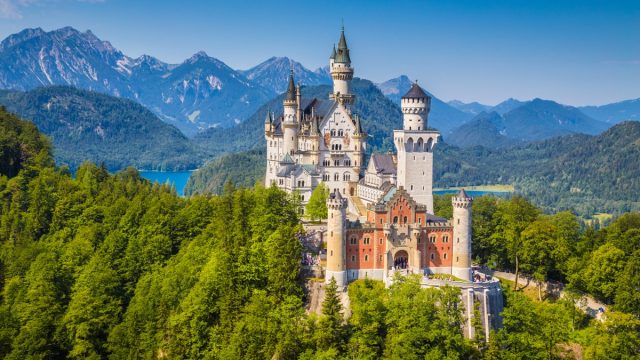
From theme parks to movies, the name Disney is synonymous with magic—not to mention the creativity of its famed Imagineers. However, the whimsical atmosphere that surrounds the House of Mouse didn’t come from nowhere. Much of the visual influence behind the classic animated films and the beloved theme parks actually came from real-life enchanting castles and story-book towns all around the world. So, read on, and discover the magical destinations that inspired Disney’s famous fairy tales.
1
Tivoli Gardens, Denmark
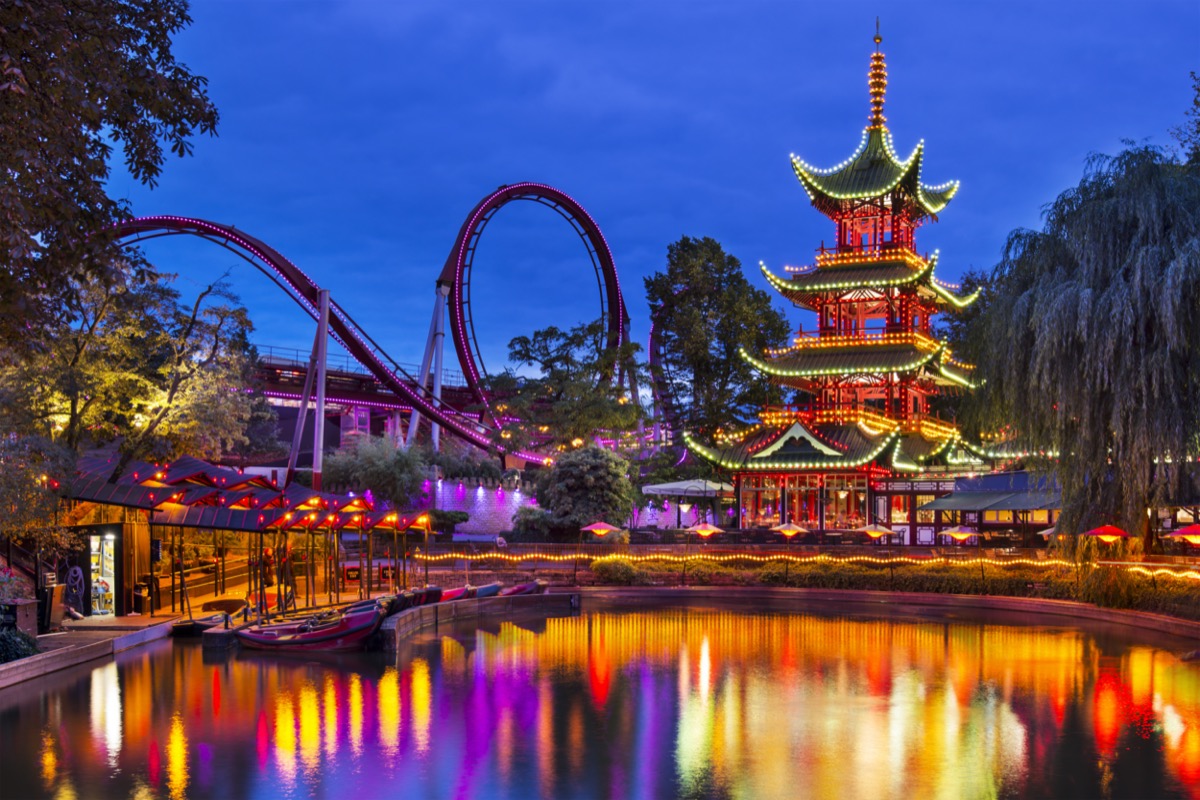
If Copenhagen’s festive Tivoli Gardens looks familiar to you, there’s a reason why. Opened in 1843, it’s the second-oldest operating amusement park in the world. Some highlights include a pirate ship, a pantomime theater, roller coasters (including a wooden one called Rutschebanen, built in 1914), an aquarium, and a ride devoted to Hans Christian Andersen’s fairy tales. Walt Disney visited in 1951, taking notes about everything from the rides to the gardens and the food—with Disneyland opening four short years later.
2
Château de Chillon, Switzerland
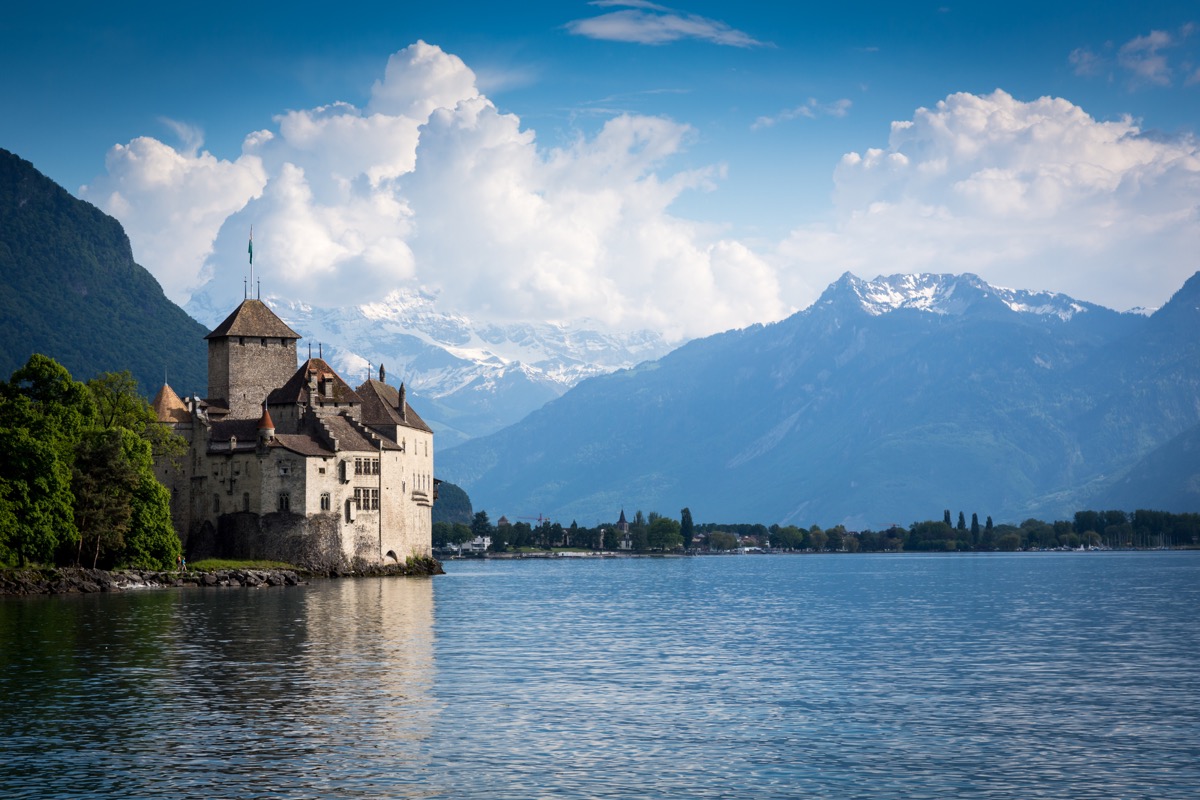
Switzerland’s most visited historic building is located on its own rock in the middle of Lake Geneva, where it was the home of the Counts of Savoy for nearly 400 years. Dating back to at least 1150, the château originally inspired Lord Byron, who penned a poem about it called “The Prisoner of Chillon,” and even wrote his own name in the dungeon. Later on, it became the main idea behind Prince Eric’s castle in The Little Mermaid.
3
Mont Saint-Michel, Normandy
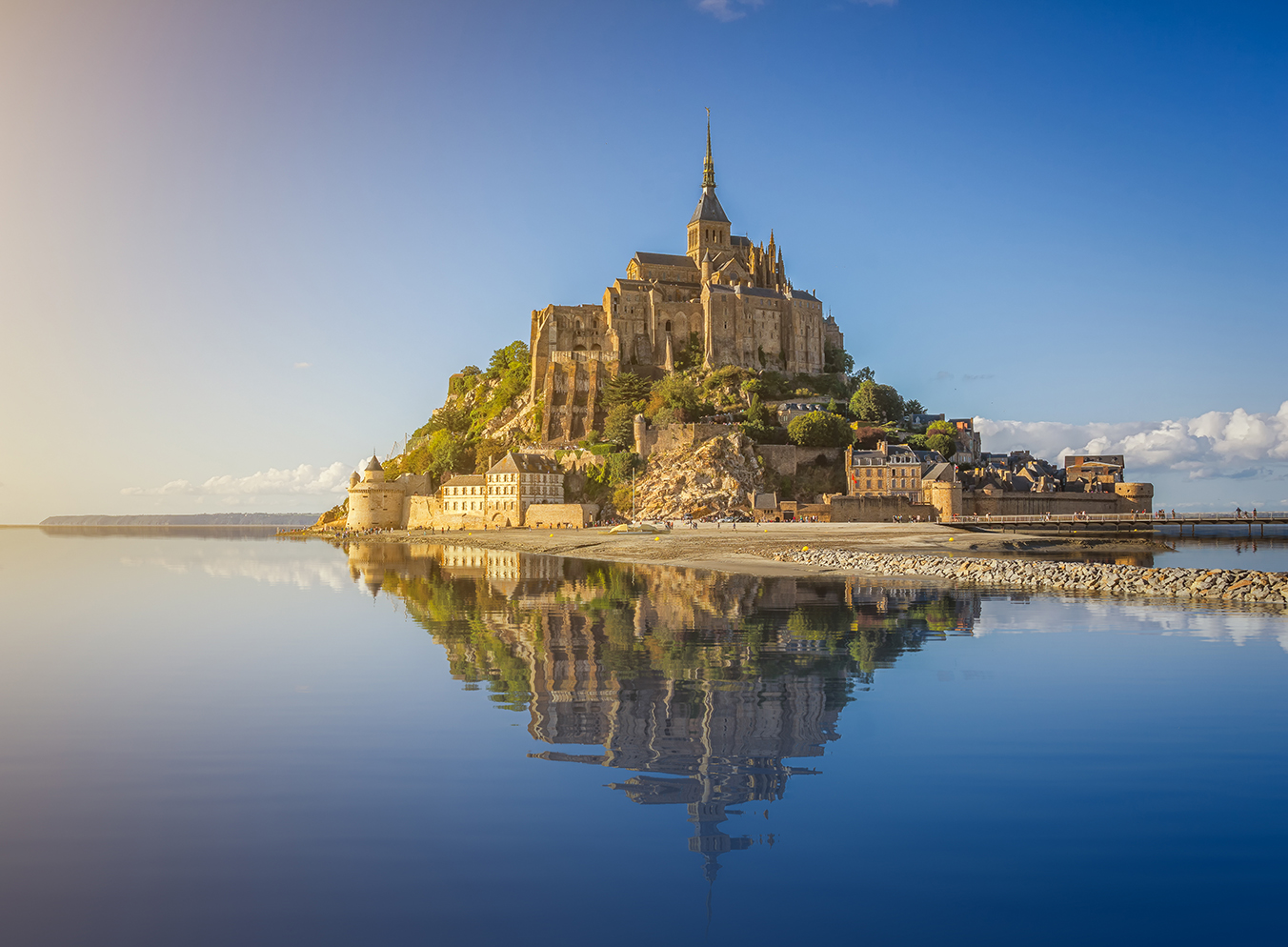
One of France’s most stunning locations, the Gothic-style Mont-Saint-Michel is a medieval Benedictine monastery. It towers dramatically over its own island in the middle of a bay where Normandy and Brittany meet. The 11th-century monastery also inspired the kingdom of Corona in one of Disney’s best-loved modern masterpieces, Tangled.
4
Colmar, France
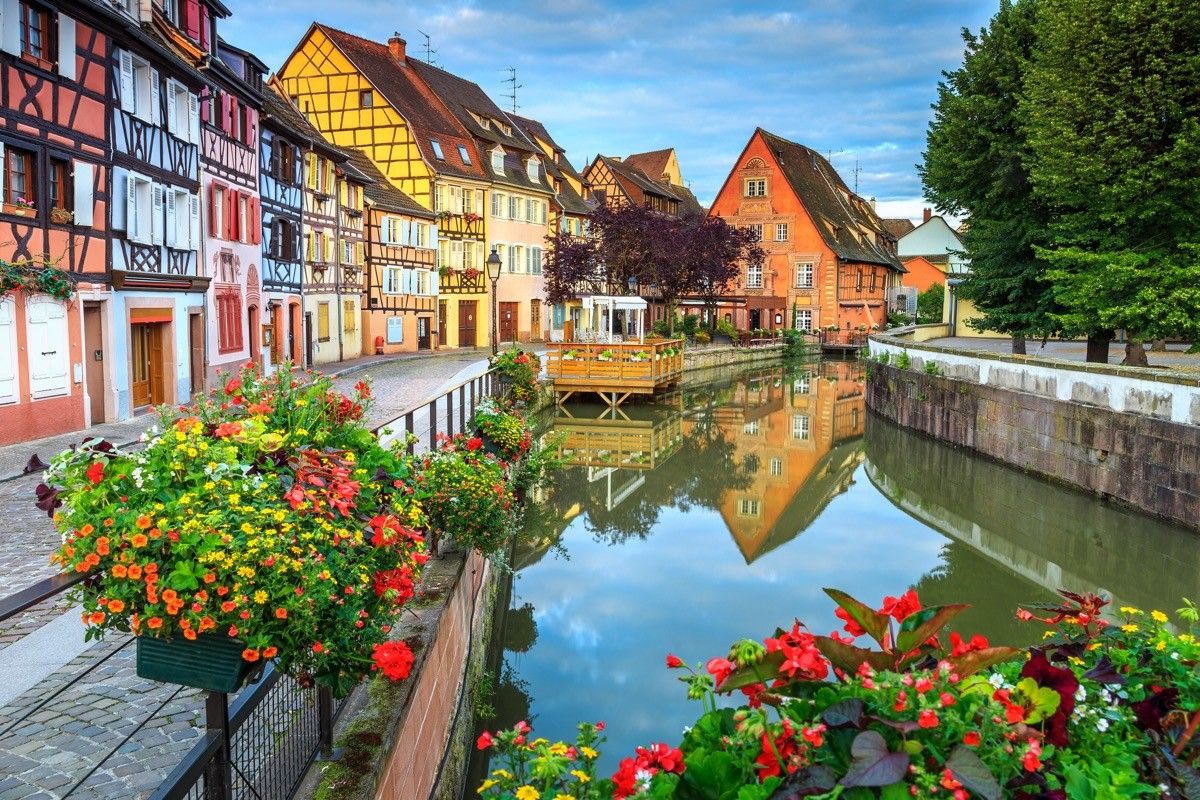
Along with other story-book hamlets around France, the quaint Alsatian village of Colmar was reportedly one of the real-life inspirations for Belle’s “little town” in Beauty and the Beast. Located in northwestern France, close to the German border, the picturesque town’s Schwendi Fountain is almost identical to the spot where bookish Belle reads to passing sheep.
5
Hell’s Gate National Park, Kenya
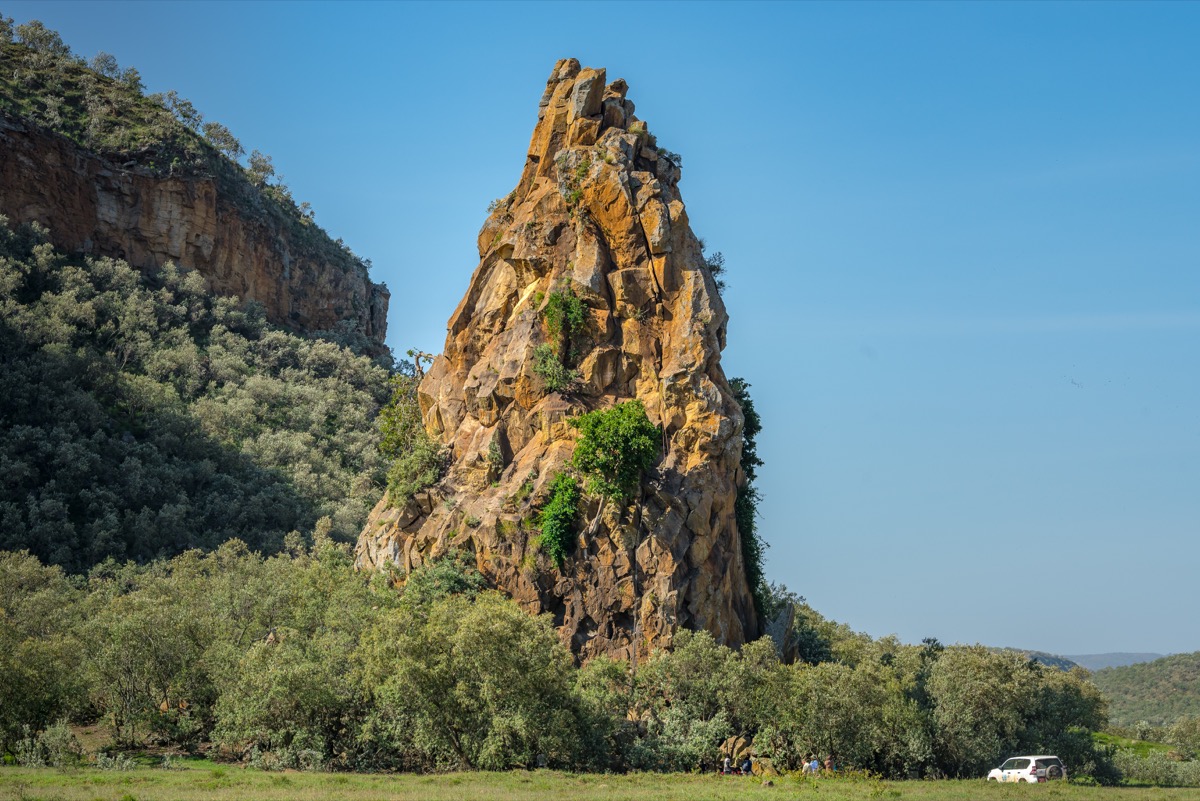
Disney animators trekked to Hell’s Gate in 1991 while researching spots for The Lion King. This national park in Kenya’s Great Rift Valley is known for its towering, jagged cliffs, similar to those seen around Pride Rock. Another fun fact? The team heard the phrase “Hakuna Matata” during their African safari and later added it to the script.
6
Taj Mahal, India

It’s easy to compare the Taj Mahal with Agrabah palace, where Jasmine and the sultan lived in Aladdin. Few places around the world are as breathtaking. Built in 1632, the jaw-dropping white marble tomb was commissioned by Emperor Shah Jahan in memory of his favorite wife, Mumtaz Mahal, and remains an exquisite example of Mughal architecture.
7
Machu Picchu, Peru
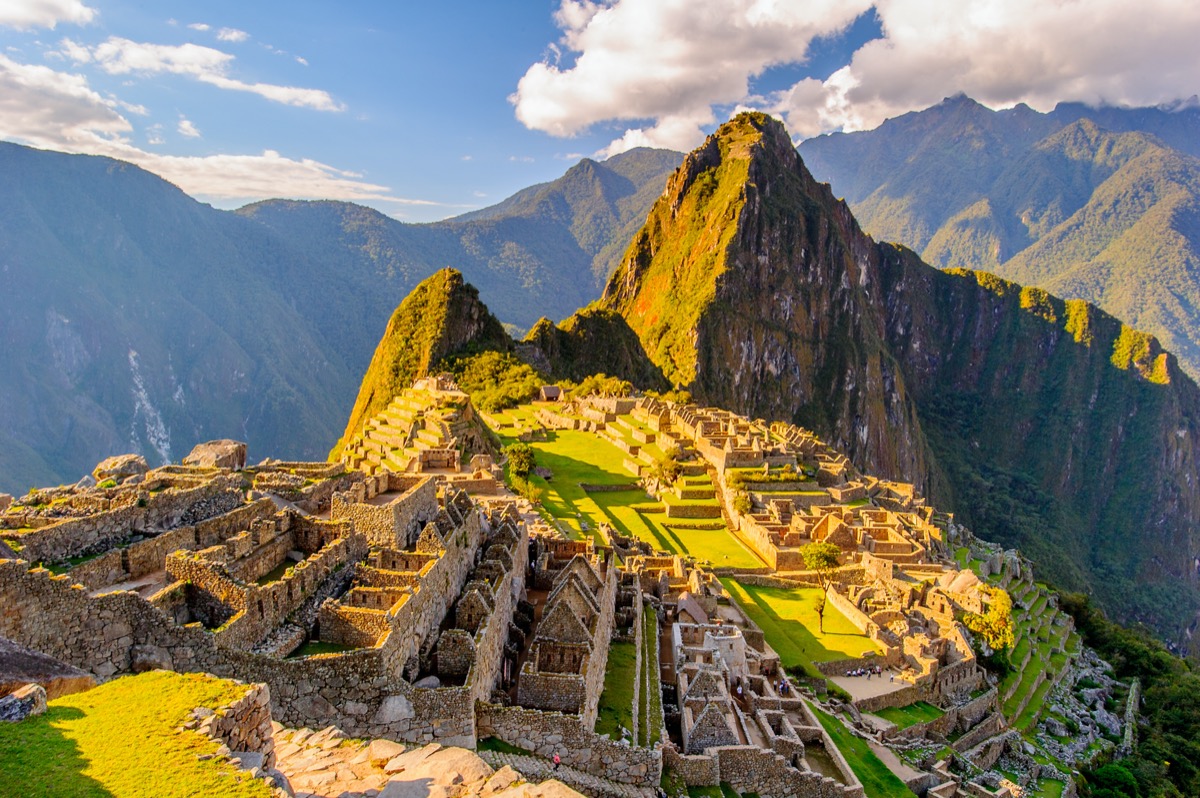
Machu Picchu is a bucket-list destination that has enchanted visitors for more than a century after it was rediscovered in 1911. As Peru’s most popular tourist attraction—not to mention one of the seven wonders of the world—the ancient civilization was visited by Disney animators while making The Emperor’s New Groove. This explains why the Incan ruins look so similar to Kuzco’s kingdom and Pacha’s village in the comedic flick.
8
Neuschwanstein Castle, Germany
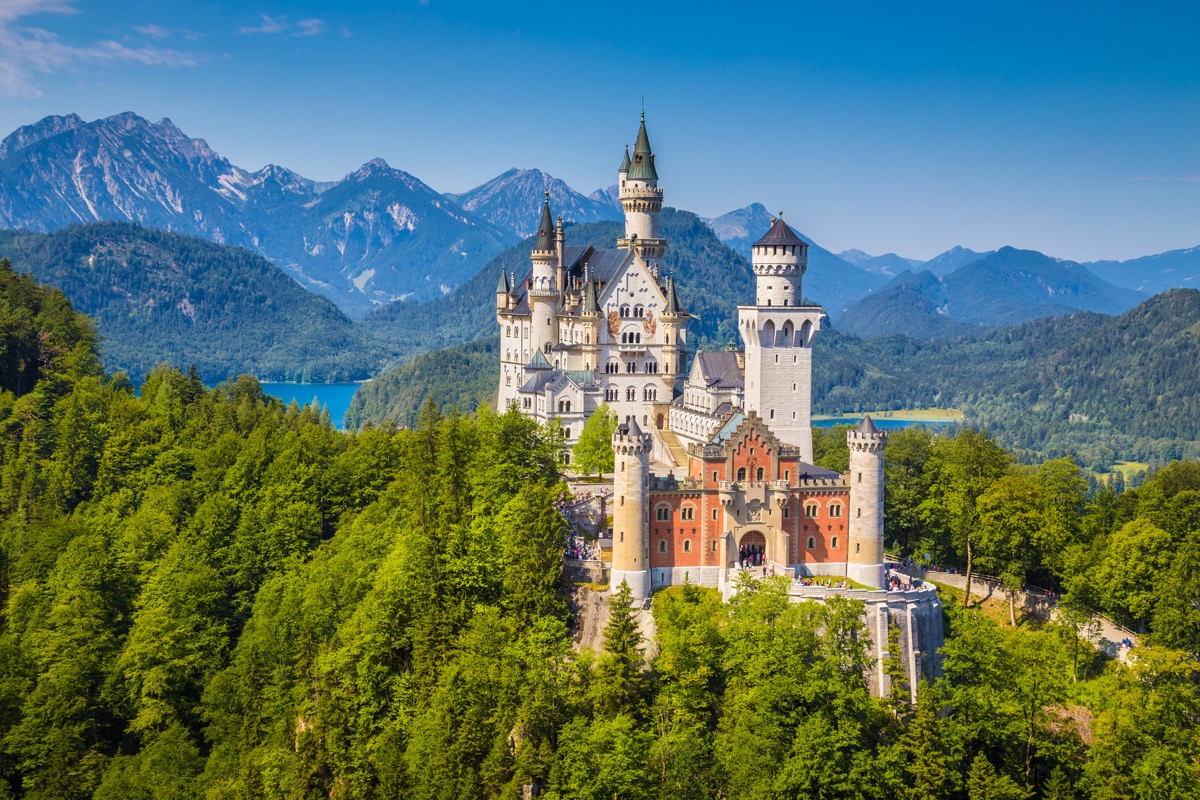
This 19th-century Bavarian castle was completed in 1892 as a retreat for dethroned (and reportedly “mad”) King Ludwig II. Neuschwanstein—which means “New Swan Stone”—was named after the swan knight character from one of Richard Wagner’s operas. In fact, Ludwig himself was known as the Swan King. Years later, Disney visited the fortress with his wife and was instantly transfixed, sketching it while working on Sleeping Beauty. It then became the spitting image of the iconic castle at Disneyland.
9
Angel Falls, Venezuela
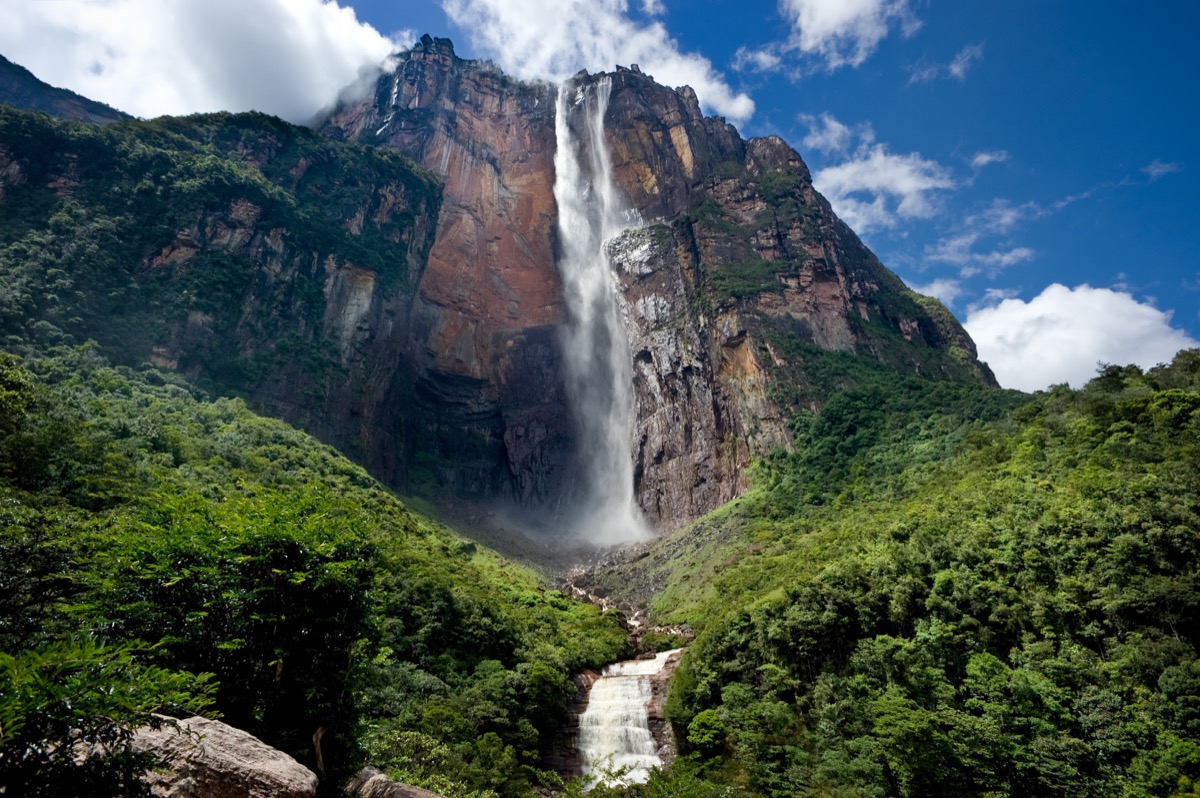
While making Pixar’s tearjerker, Up, filmmakers traveled to Venezuela and Brazil, looking for dreamy landscapes to capture Carl and Ellie’s mystical Paradise Falls. The final location was Angel Falls in Venezuela, the world’s tallest waterfall in a table-top mountain called Auyantepui.
10
Eilean Donan Castle, Scotland
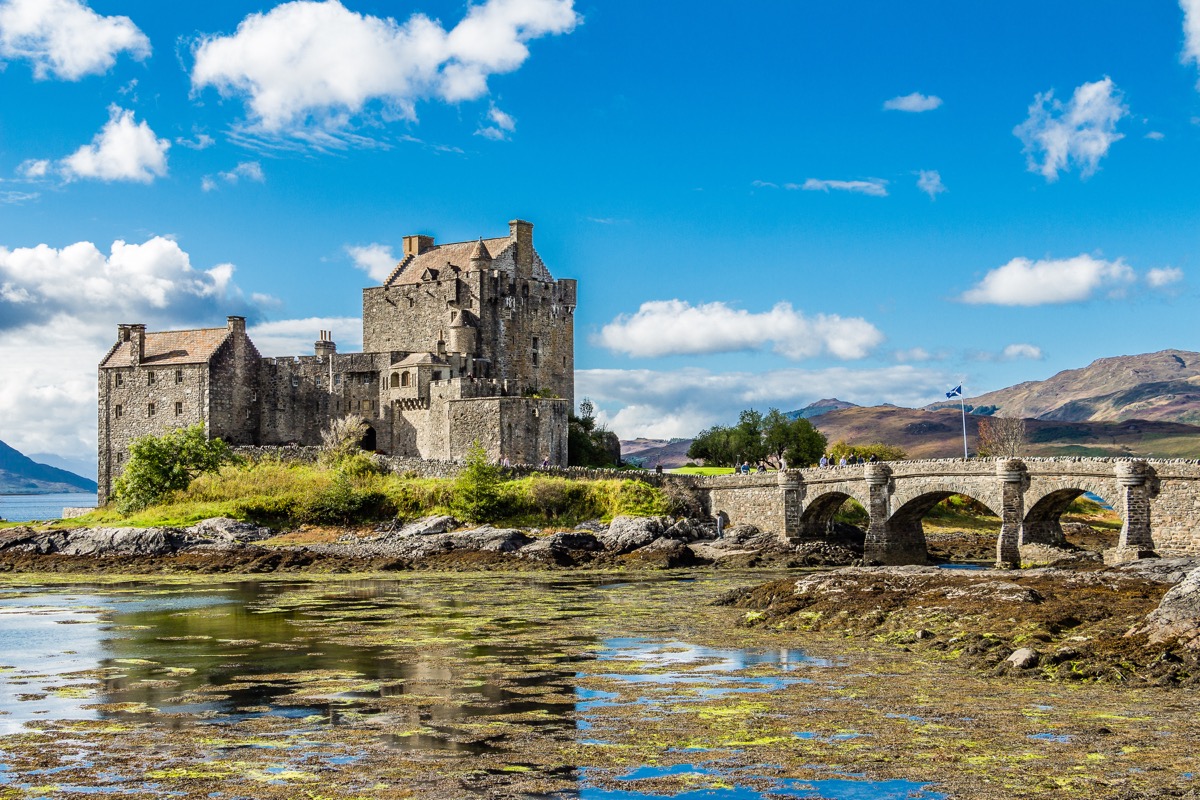
Overlooking Loch Duich in the Scottish Highlands, the 13th-century Eilean Donan Castle was one of the inspirations for the Pixar animated film Brave. (Other locations reportedly included Urquhart Castle in Loch Ness, Dunnottar Castle in Aberdeenshire, and Dun Carloway broch at the Isle of Lewis.) The castle previously served as a Viking defense, a monastery, and the site of a Jacobite rebellion, which ultimately led to its ruin. The current version is a reconstruction that was lovingly finished in 1932 by Lieutenant Colonel John MacRae-Gilstrap, who bought the island in 1911.
11
Matterhorn, Switzerland

Walt Disney loved Switzerland so much that he visited every year and was captivated by its beauty, tranquility, and traditions, as well as the awe-inspiring sight of the 14,000-foot-tall Matterhorn. This admiration led to Disneyland’s very first roller coaster, the Matterhorn Bobsleds. (It’s also the world’s first tubular steel coaster and the only Matterhorn mountain of any Disney park.) The ride opened in 1959, the same year the Disney movie Third Man on the Mountain was released.
12
Château de Chambord, France
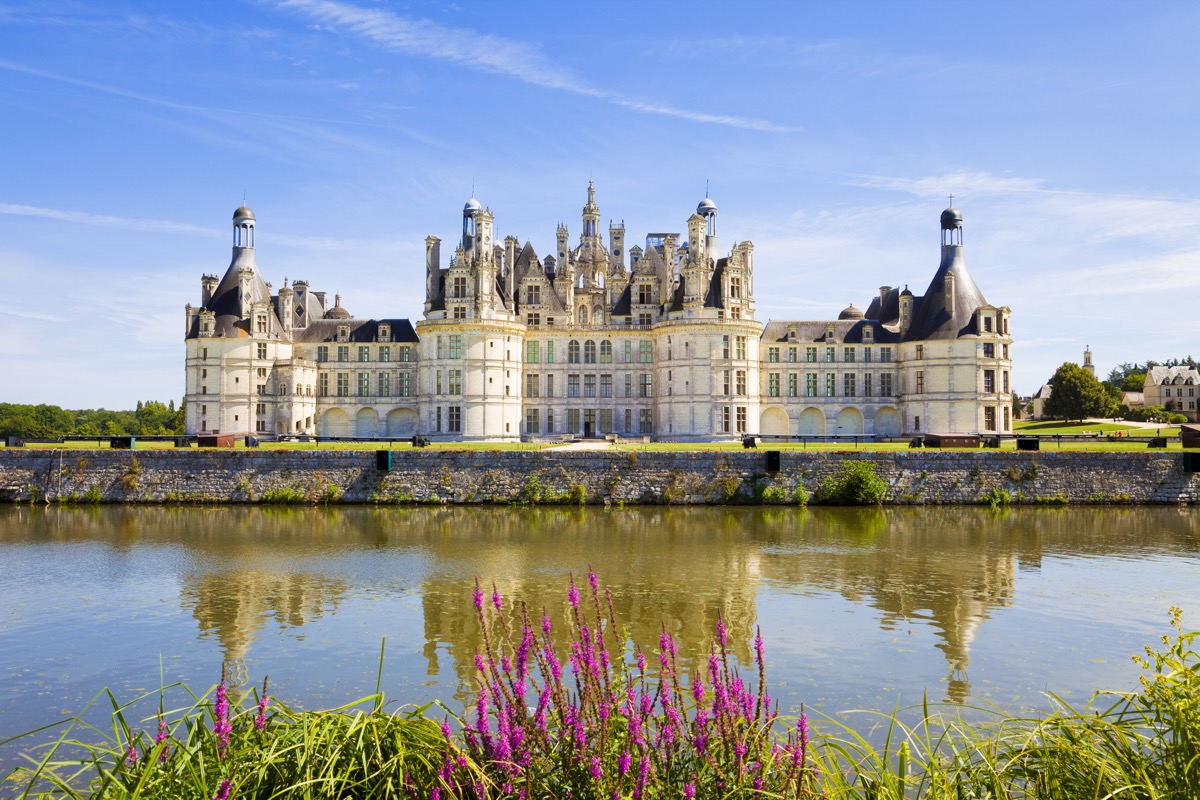
King Francis I built this so-called hunting lodge between 1519 and 1547. It also served as a royal apartment for the “Sun King,” Louis XIV. The Château de Chambord—now a UNESCO World Heritage site—is the largest estate in the Loire Valley and the inspiration behind the castle in Beauty and the Beast (both the 1991 animated film and the 2017 live-action movie). If you want to experience it in full glory, go during Christmas, when the property hosts a 16th-century ball, complete with live music, traditional attire, and Renaissance dance lessons.
13
Forbidden City, China
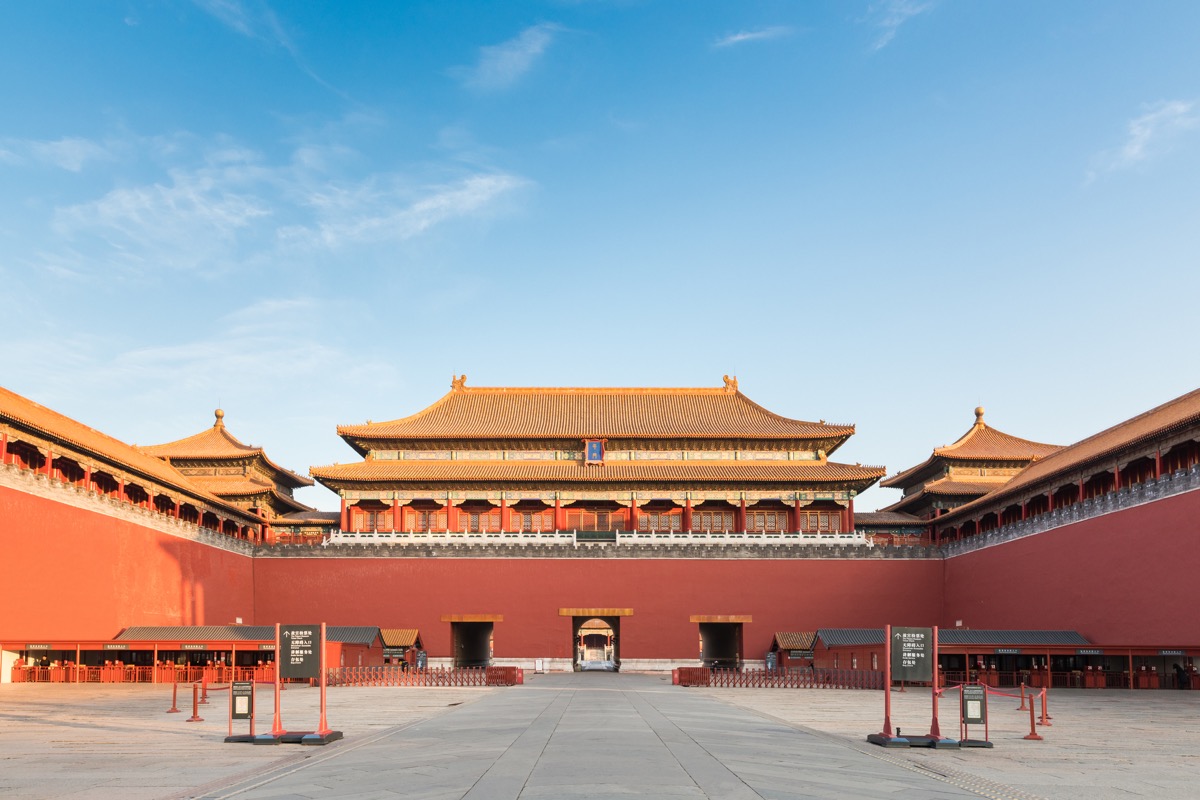
Based on the Chinese legend of female warrior Hua Mulan, the 1998 Disney movie Mulan took visual cues from Beijing’s Forbidden City, formerly home to the emperors of the Ming and Qing dynasties. The UNESCO World Heritage Site was closed to commoners from 1420 to 1912, with only the emperor and those he deemed worthy of permission allowed to enter (hence the name). Now, guests are allowed—more than 19 million people visited in 2019 alone—and it’s a museum for nearly two million priceless artifacts and treasures.
14
Bergen, Norway
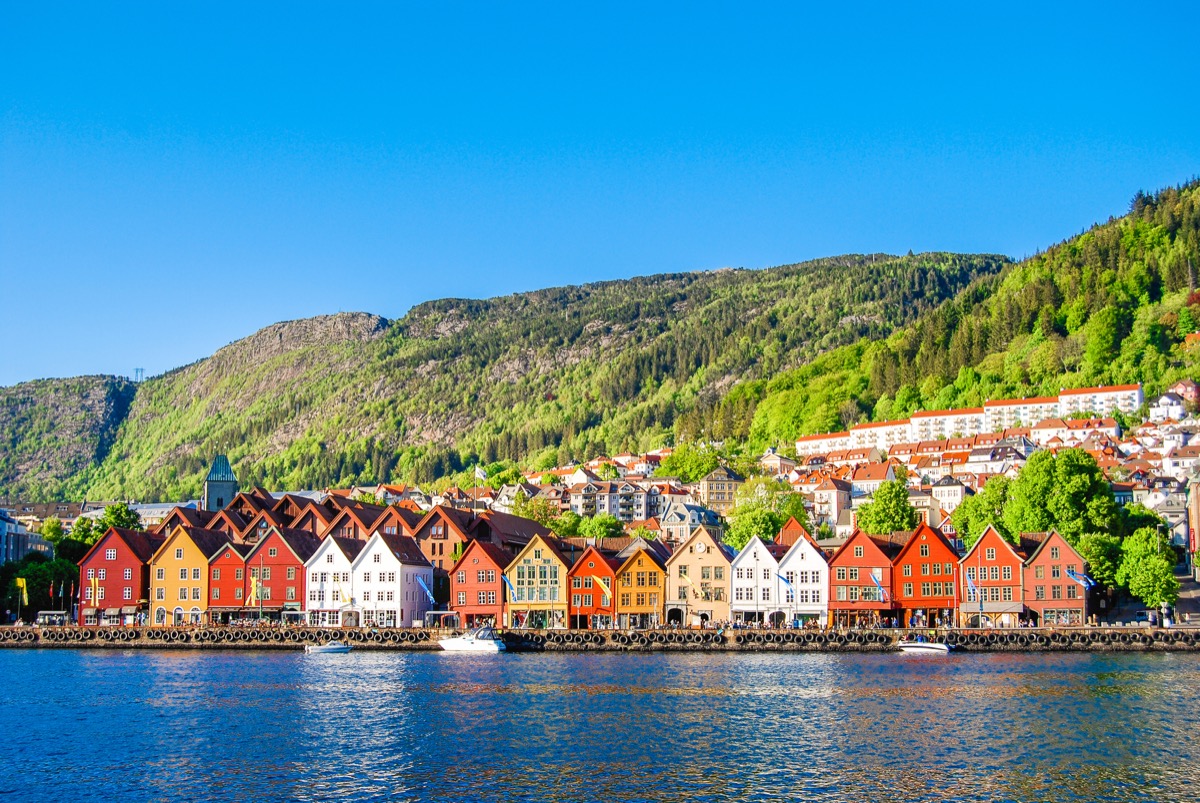
Bergen is the perfect jumping off point for Disney’s runaway hit, Frozen. As Norway’s second largest city, Bergen is known as the “heart of the fjords” and the “city between seven mountains,” similar to the fictional Arendelle. It combines breath-taking vistas and Norwegian architecture—including its Fish Market and colorful wooden houses—familiar to Frozen lovers.
15
Hallstatt, Austria
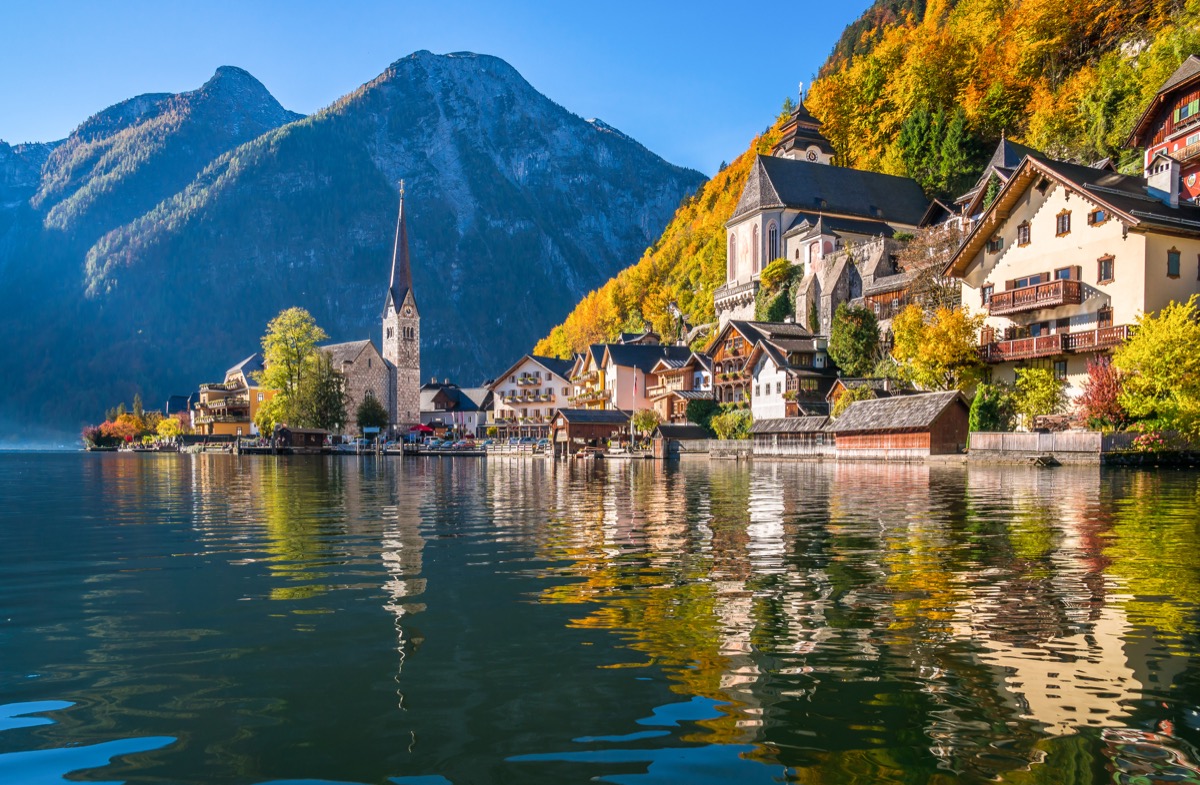
Another Frozen inspiration: the Austrian village of Hallstatt—otherwise known as “the most Instagrammable town in the world.” Sitting at the base of the Dachstein mountains, the postage stamp-sized enclave—population 800—has recently been begging visitors to stay away from its ample charms. With the release of Frozen 2, the hamlet has been struggling with up to 10,000 tourists per day, more than six times the tourists (per capita) of Venice. It’s no wonder as the town features gingerbread houses overlooking the waters of Hallstätter See and surrounded by massive mountain peaks.
16
The Himalayas, Nepal
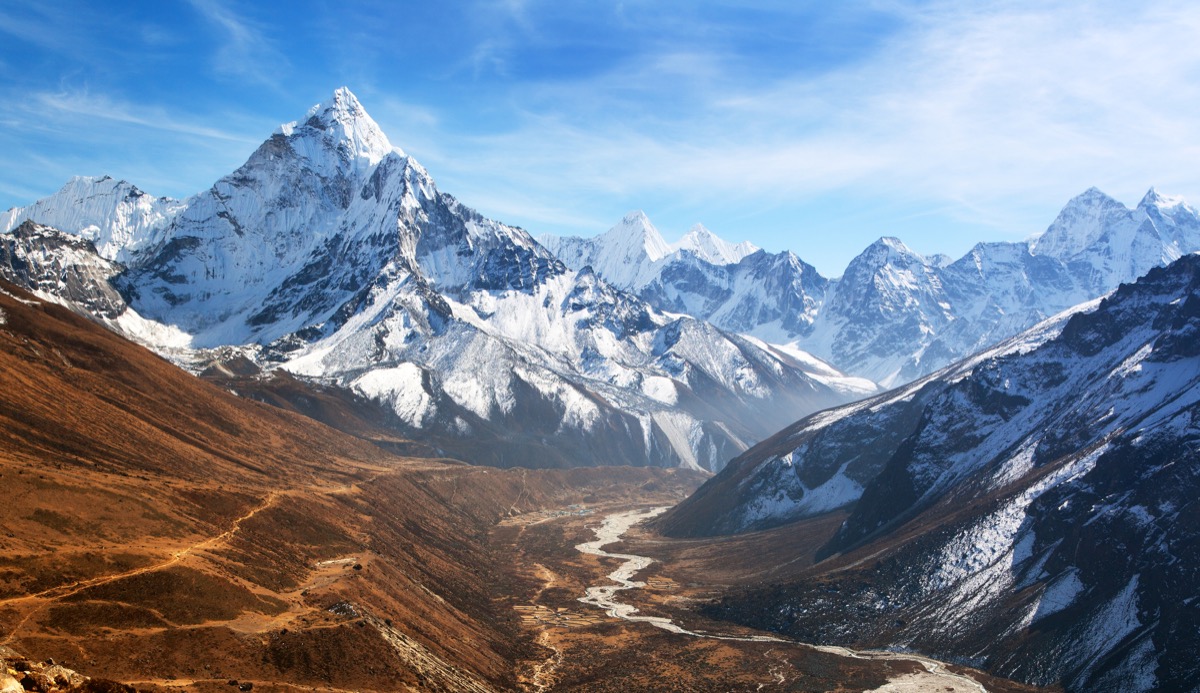
When visitors set foot inside Disney’s Animal Kingdom theme park, they’re generally blown away by two sights: the massive Tree of Life sculpture and the Expedition Everest ride towering over the park’s Asia land. Disney Imagineers and conservationists visited Nepal’s Himalayas for the ride’s inspiration, hoping to conduct research on yeti folklore and the area’s culture. Mount Everest’s names in Tibetan and Sanskrit convey its majesty and awe: “Goddess Mother of the World” and “Peak of Heaven.” It was officially named the world’s highest point in 1852; meanwhile, the roller coaster itself was listed in the Guinness Book of World Records as the most expensive ever built, and it also holds the distinction of being the world’s tallest artificial mountain.
17
Alcázar de Segovia, Spain
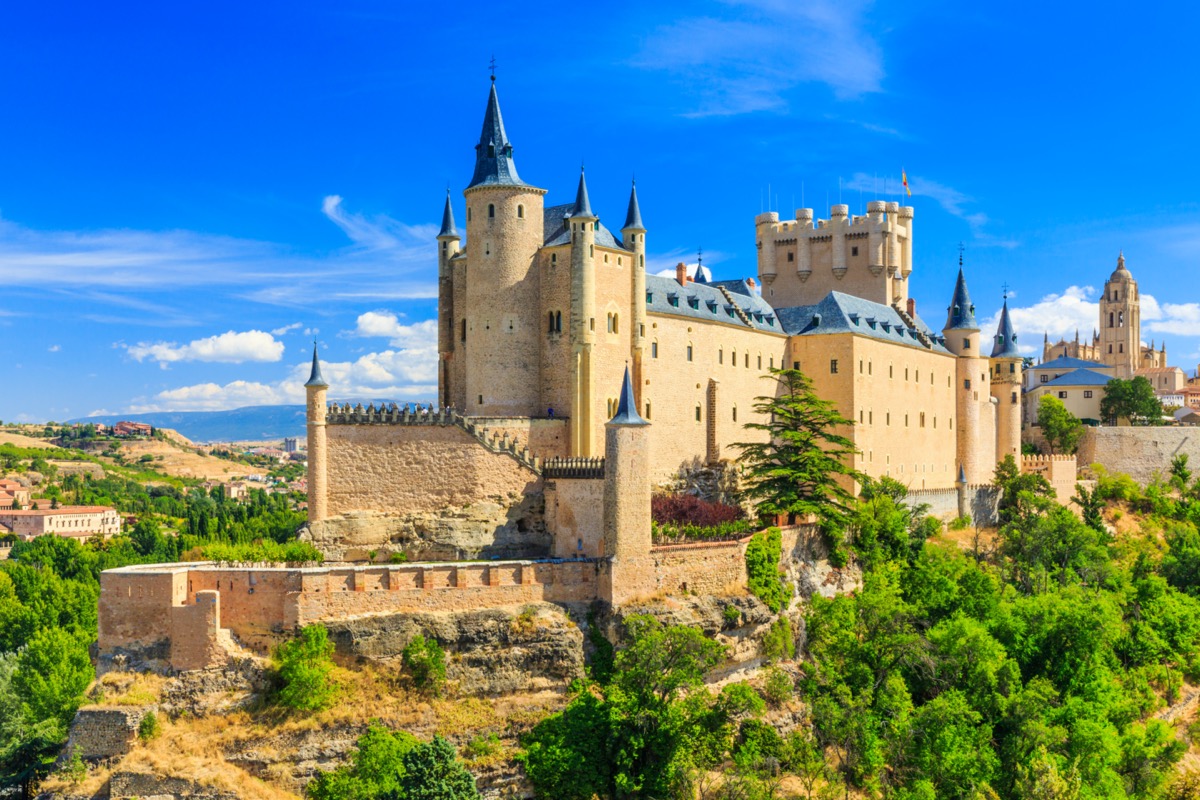
The queen’s castle in Walt Disney’s first full-length animated film, Snow White and the Seven Dwarfs, was inspired by Spain’s most famous castle: Alcázar de Segovia. The 12th-century Gothic fortress has also been used over the years as a royal residence, a prison, and the Royal College of Artillery. While a fire destroyed much of the castle in 1862, it was eventually renovated and now acts as a museum and military archive.
18
El Castillo, Mexico
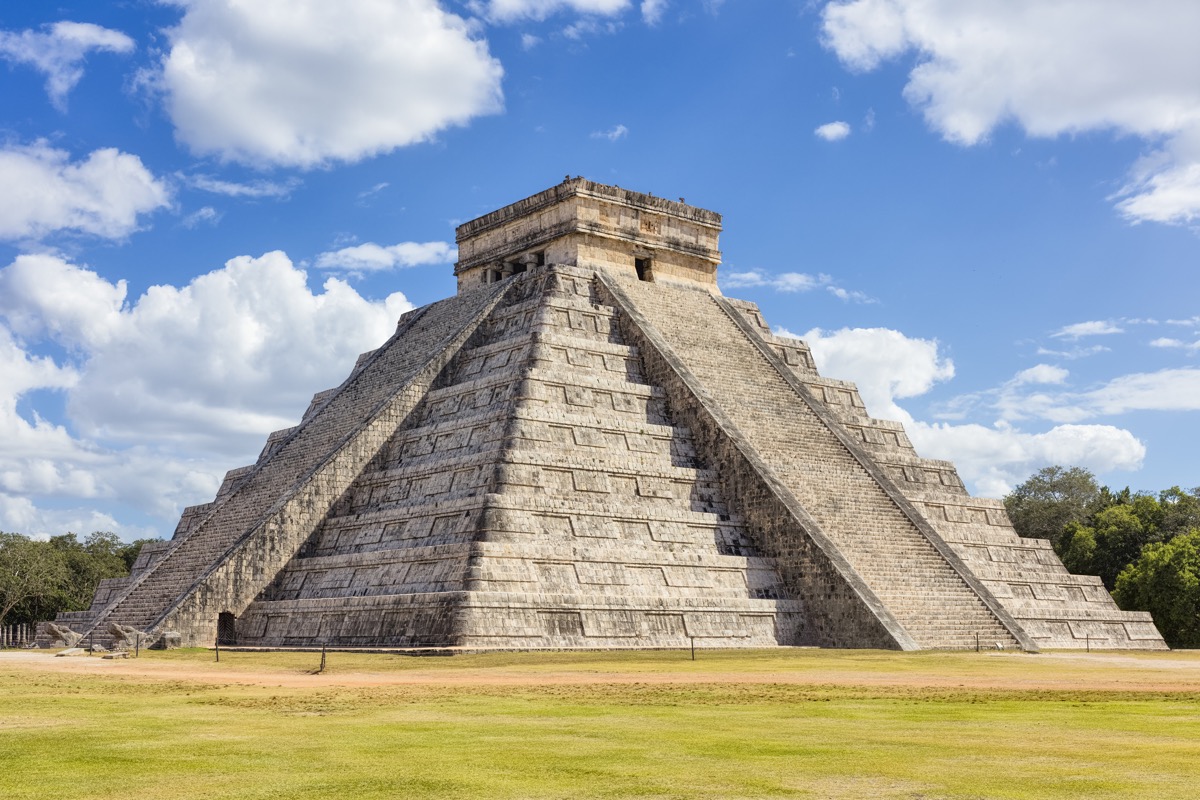
When EPCOT opened at Walt Disney World in 1982, it was immediately recognized as one of the world’s most impressive parks, with two main areas: Future World and World Showcase. Among the marquee attractions in the World Showcase is the Mexico pavilion, which features a 36-foot-tall pyramid inspired by the Mayan temple El Castillo in the Yucatan’s mythical Chichén Itzá. Dating from between 800 and 1100 CE, the pyramid displays the effect of a feathered serpent crawling up its side twice a year on the spring and fall equinoxes, a neat trick mimicked at EPCOT’s version every evening.
19
Marceline, Missouri
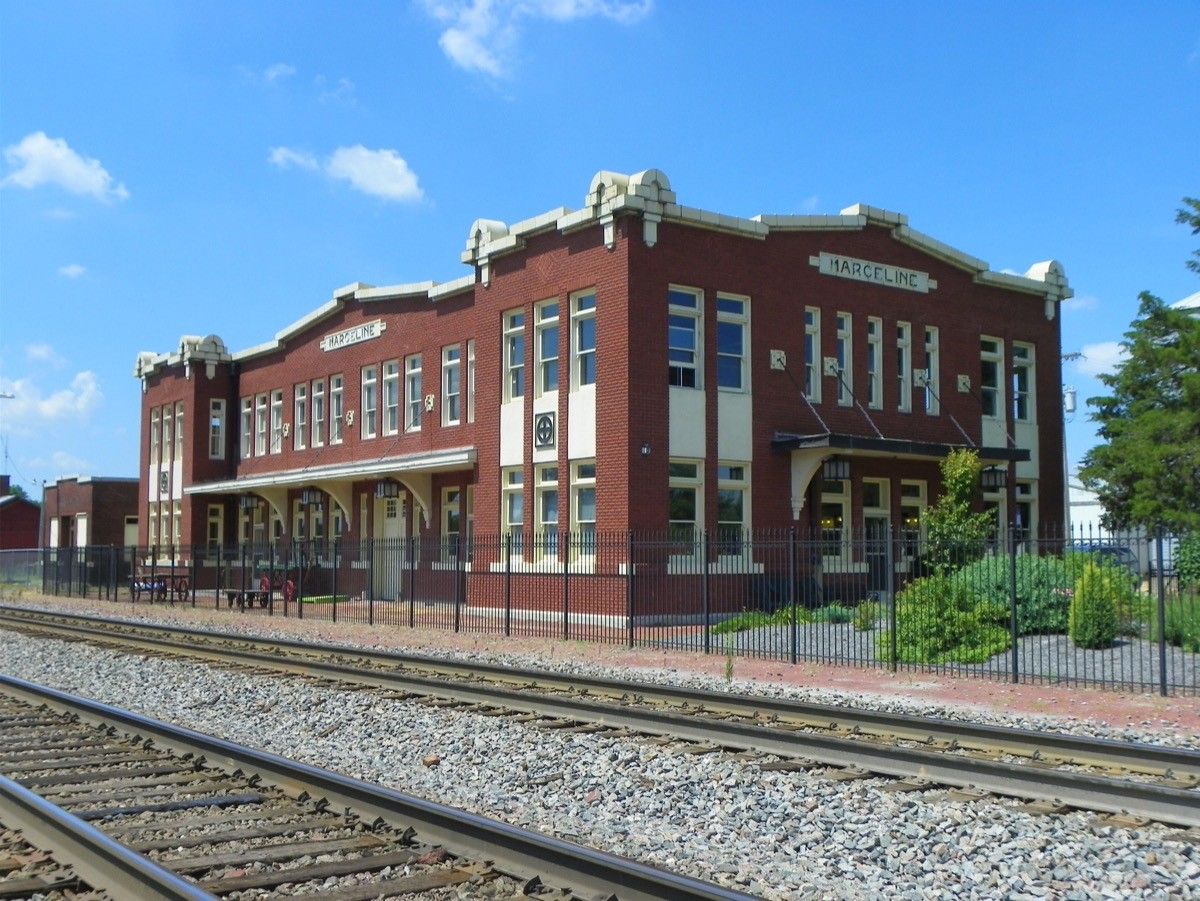
Every time you step onto Main Street, U.S.A., you’re experiencing a slice of Walt Disney’s childhood home of Marceline. The tiny Missouri town still stands, and visitors can stop by the Walt Disney Hometown Museum, which is housed inside the restored Santa Fe Railroad Depot. Here, you’ll find 3,000 artifacts from Disney’s personal family life and his theme parks.
Want to learn more Disney details? Check out the 20 Secrets Disney Employees Don’t Want You to Know.